
In order to provide the best specification fuel for your engine, Millers Oils have created a range of fuel additives for both petrol and diesel engines that can bring any fuel up to the high standard that was originally intended for your car, as well as keeping the internals clean.
Have you ever thought about what fuel you put in your car? Do you go for the cheapest fuel station you can find, or do you splash out on the premium fuels to give your car the best of the best?
The chances are that the fuel you are putting in the car, despite being to EN590 or EN228 standards, is lacking some critical additives that will keep your engine internals running as efficiently and as clean as possible. This can leave your engine exposed to excessive carbon build up and the clogging of components such as EGR valves that can have a detrimental effect on the performance of your car’s engine.
Millers fuel additives
With this in mind, if you are looking to give your engine a good clean, there are three main Millers Oils fuel additives that are particularly effective:
Millers Power EcoMAX
Available in a 500ml bottle for multiple tanks of fuel or a single one-shot bottle, Millers Power EcoMAX fuel additives give your engine a boost in more ways than one. Not only do they help to reduce emissions and improve fuel economy, they also give the fuel a power boost by adding up to 3 octane numbers in petrol fuels and up to 4 octane numbers for diesel.

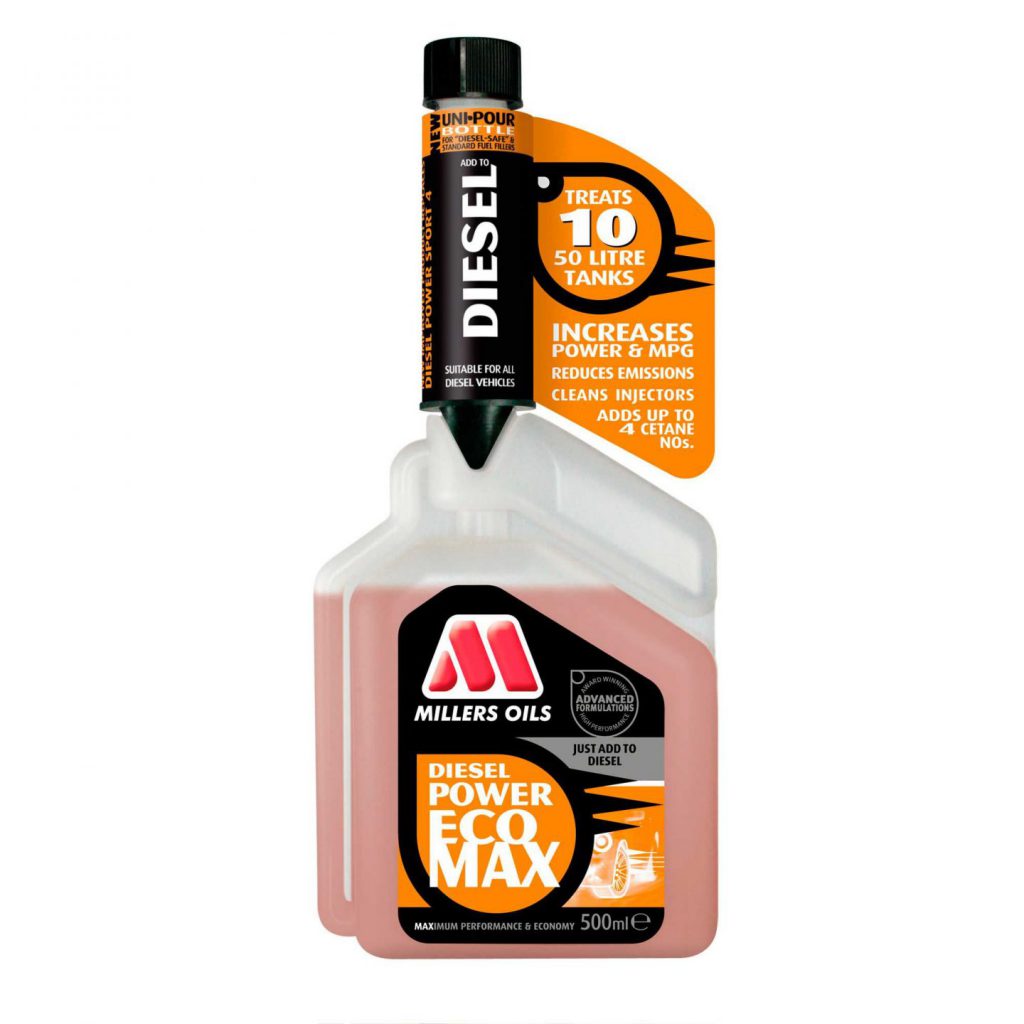
Recommended for use on every tank of fuel, the Power EcoMAX additives work to thoroughly clean your fuel system including the injectors as well as reducing carbon build up in the combustion chamber. All of this means a smoother running engine with better throttle response and increased fuel economy.
This additive can also be used as part of treating engine issues such as turbo and EGR valve problems and is particularly useful for MOT emissions failures.
Millers injector cleaner
When running an engine on any of the available fuels, it is likely that over time the injectors will start to clog up with carbon deposits, or the nozzle can be covered with a lacquer that prevents the injector from functioning correctly.
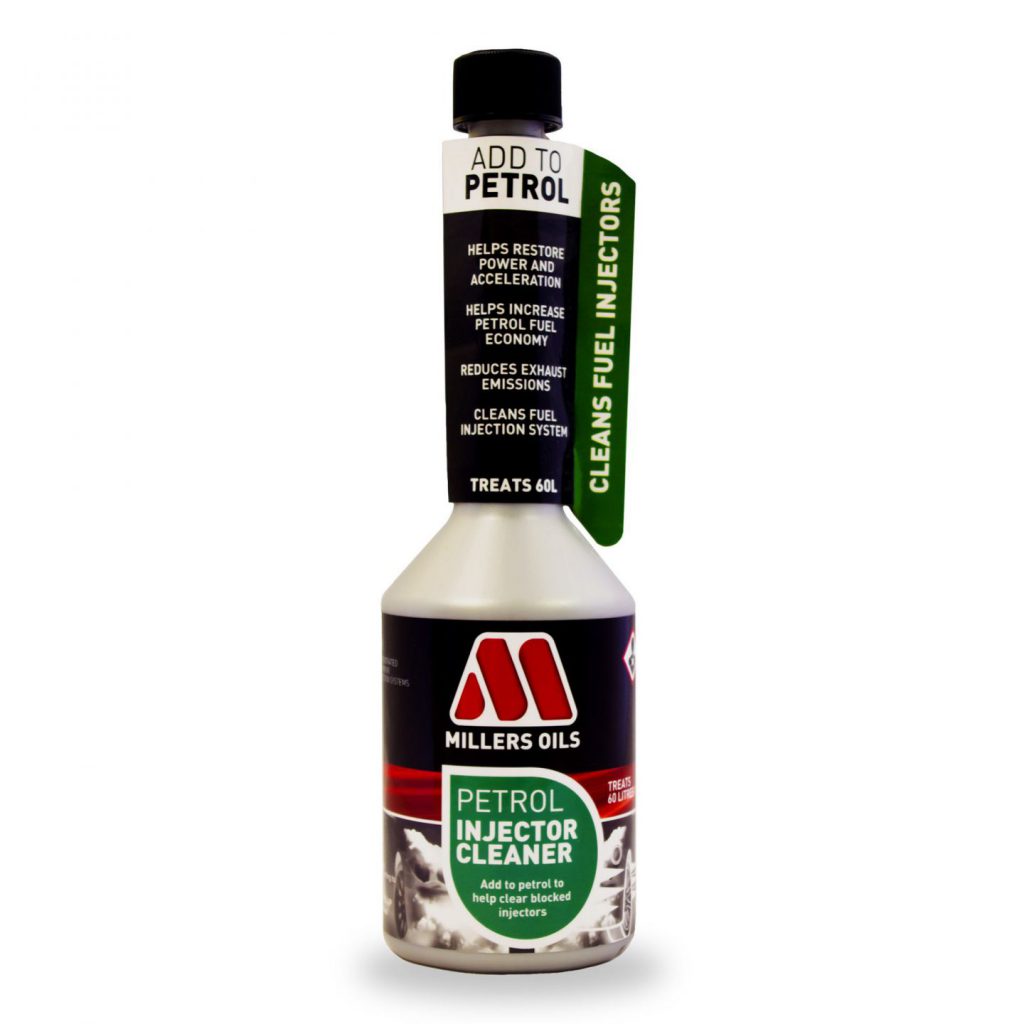
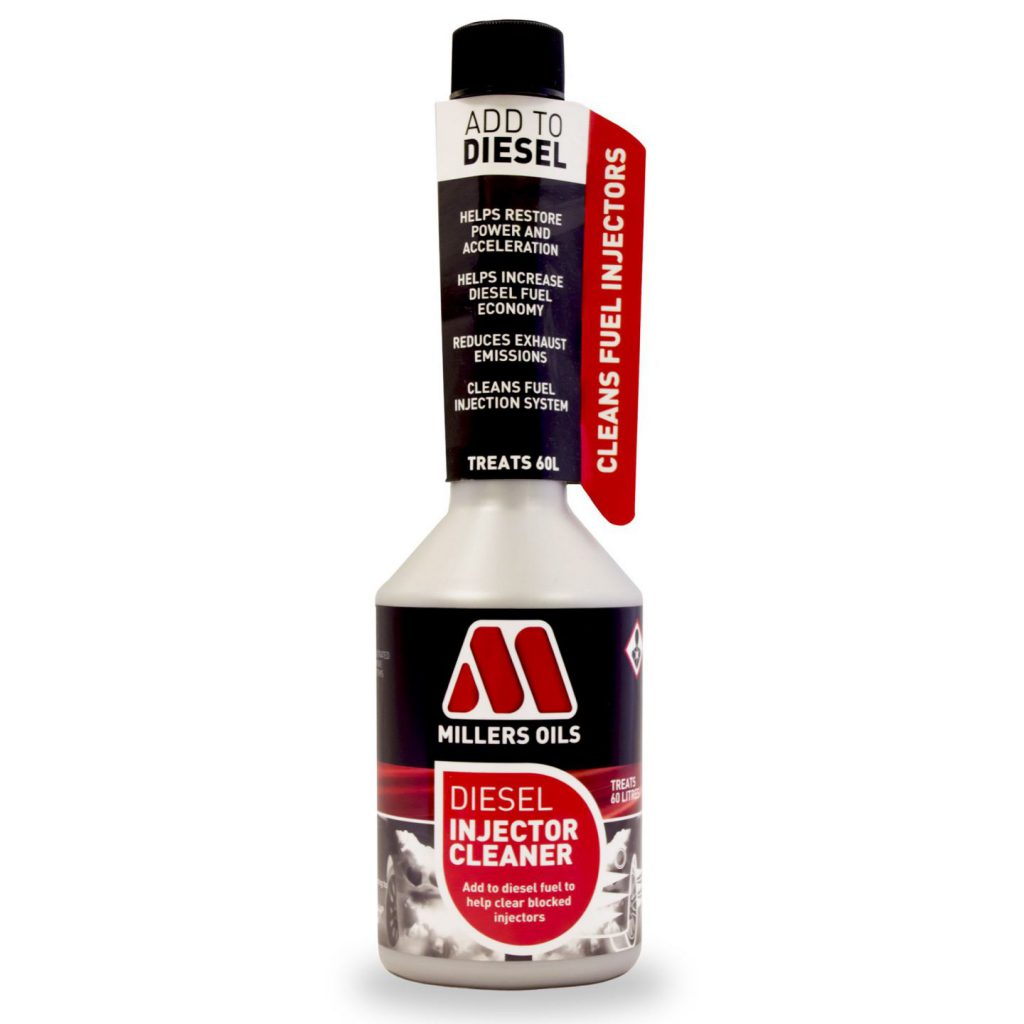
By design, an injector is intended to spray a very fine mist of fuel into the combustion chamber. If the nozzle becomes partially blocked, the spray pattern is affected and can result in the injector emitting larger fuel particles. This will cause the fuel burning process to become less efficient, resulting in poor fuel economy, increased emissions and an increase in carbon deposits.
By adding either the petrol or diesel injector cleaner to the fuel, the cleaning molecules within the additive specifically target the injectors and free up the nozzles to restore the ideal spray pattern, resulting in improved acceleration, reduced emissions and better economy.
Millers engine flush
When you change the oil in your engine, it is often the case that you don’t manage to drain all the old oil from the system. Most modern synthetic oils are designed to cling to engine components to provide better protection from wear. As such, there will be a certain amount of this oil left inside the engine when you remove the drain plug.
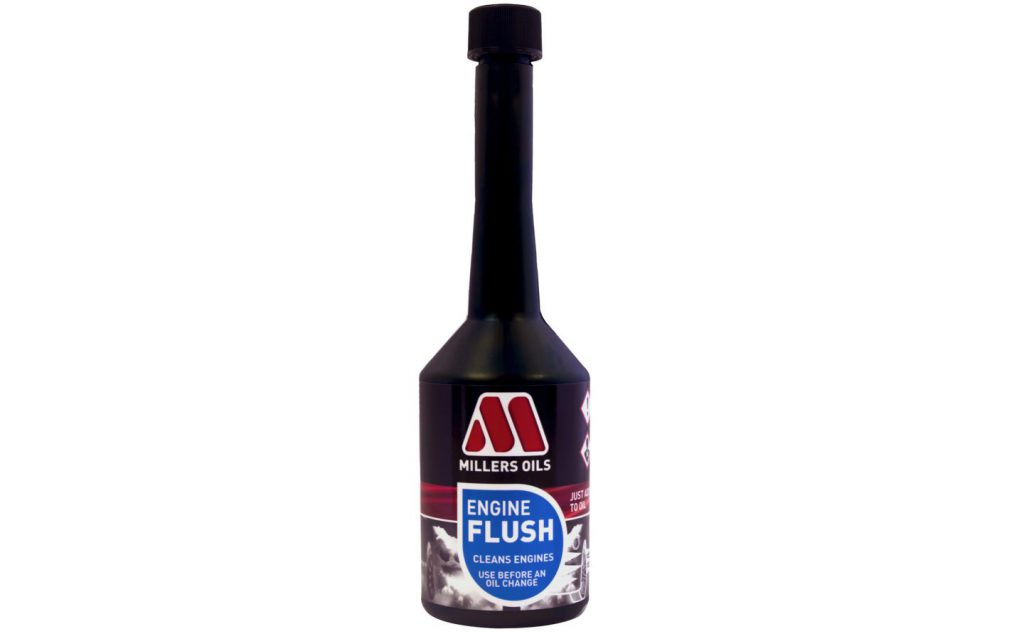
This old oil, complete with any absorbed water and other contaminants, can have a negative effect on the new replacement oil that you add to the system, instantly degrading it and reducing its lubrication and protective abilities.
To give yourself the very best chance of removing as much of the old oil as possible, adding a bottle of engine flush to your old oil prior to draining will make a huge difference in the cleaning process. Being an oil based additive, it mixes with the existing oil in the engine and works to remove any deposits from within the engine without causing large clots which can cause harmful blockages elsewhere in the system.
As an added bonus, because engine flush is oil based, there aren’t any harmful solvents that may cause damage to engine components and compromise the new oil.
Other Millers additives
Of course, there are other additives available within the Millers Oils range such as DPF cleaners, classic car specific additives and the very popular CVL and CVL Turbo valve lubricants and octane boosters. These all provide the same level of cleaning and engine performance improvements.
Testing Millers Oils on a staff members car
To show what these additives can do, we took a Ford Focus 1.6 Zetec that belongs to one of our members of staff and performed some tests. (Don’t worry, we did ask for their permission first!).
To start off we made sure that the engine was warm before checking the condition of the oil by inspecting the dipstick. As the oil had only been changed about four months earlier, the oil was still golden in colour as it would have been when first added to the engine.
What was also evident was a smell of petrol in the oil, which usually means an issue with an injector. As mentioned earlier, if an injector is not able to provide an even spray pattern in the top of the cylinder, the fuel is pumped in with larger droplets rather than a fine mist. This means that the burn process is not as efficient and can lead to unburnt fuel remaining in the upper cylinder. This will eventually find its way past the piston and into the oil and exhaust system.
With the oil checked, we then started the engine prior to performing an emissions test. The results of this test can be found below:
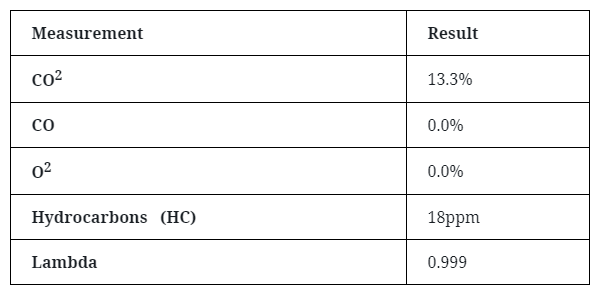
After this, we performed a visual inspection of the spark plugs. As you can see from the image below, there is a build-up of carbon on the end of the plug that would suggest that the fuel burning process is not as optimised as it should be.
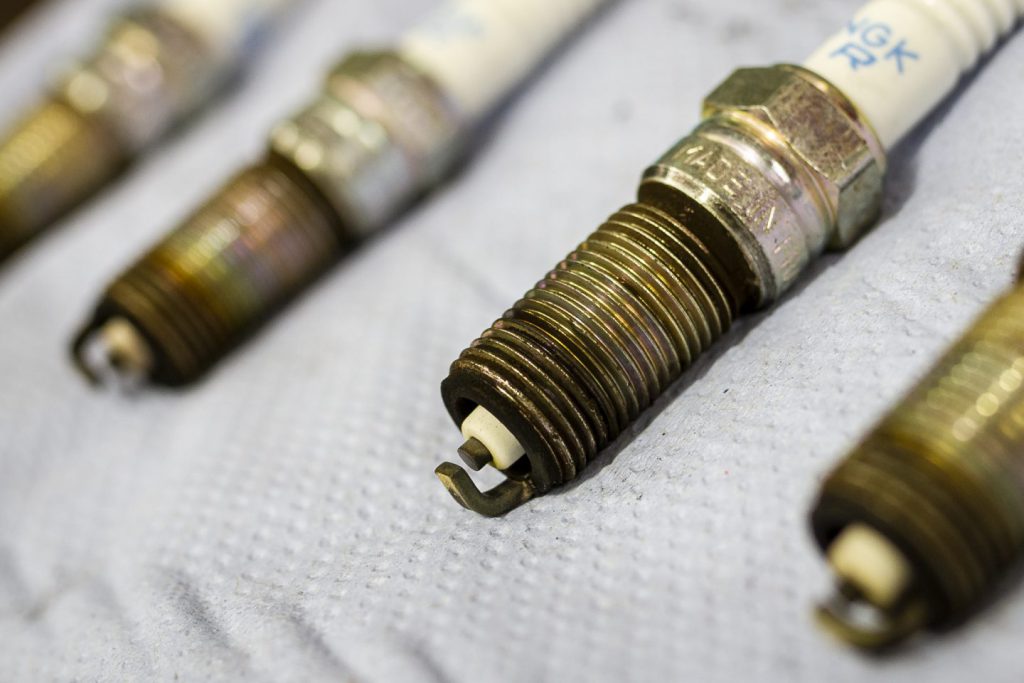
With the spark plugs removed, we could now get a good look at the top of the pistons inside the cylinders. Using an inspection camera, we could see that there was a build-up of carbon on the edge of the piston crown in cylinders one and two, with a lacquer over the surface.
In cylinder three there was evidence of a vapour which could point to an issue with the injector, causing fuel to remain in the cylinder. This may also have contributed to the smell of petrol in the oil from the dipstick. Cylinder number four was significantly different from the others as there were heavy carbon deposits all over the top of the piston crown.


It is worth bearing in mind that the camera was only capable of displaying the top of the piston. But as we could see carbon deposits on the piston, it is safe to assume that the whole upper lining of the cylinder would also have had a carbon coating, particularly as the spark plugs were covered in carbon.
While the spark plugs were removed, we performed a compression test on the car using an analogue gauge to see the pressure building in each cylinder. This showed that each cylinder was running about 130psi with a consistent pressure build up.
Despite the car being 15 years old and being used as a daily commuter with very little maintenance, the inside of the engine was surprisingly clean. But could we improve on this simply by using some additives? Well, let’s find out.
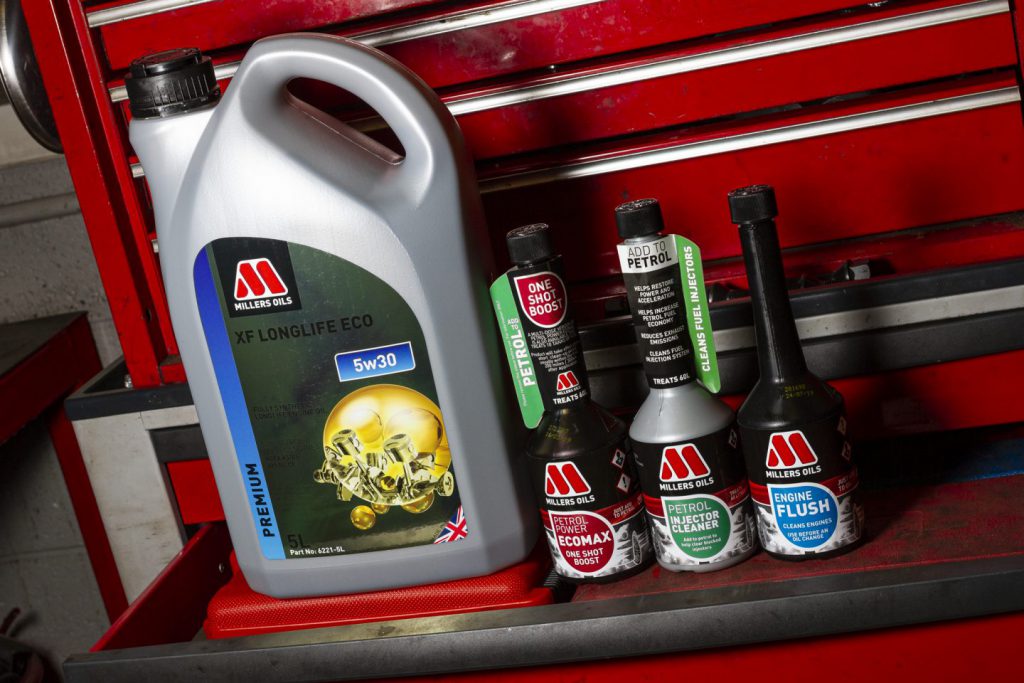
With the car put back together, we added a bottle of petrol injector cleaner, petrol power EcoMAX One Shot to the fuel tank and an engine flush to the oil. We then ran the engine for around 20 minutes at 2,250 RPM to give the additives a chance to circulate the engine and for the engine flush to permeate the entire oil system.
With 20 minutes now elapsed, we then set about changing the oil and filter. As we mentioned earlier, when we checked the oil it was still a golden colour. However, when we removed the sump plug, the oil that came out was very dark – almost to the point of being completely black. This shows that all of the carbon build up throughout the oil system had been very thoroughly cleaned out by the engine flush.
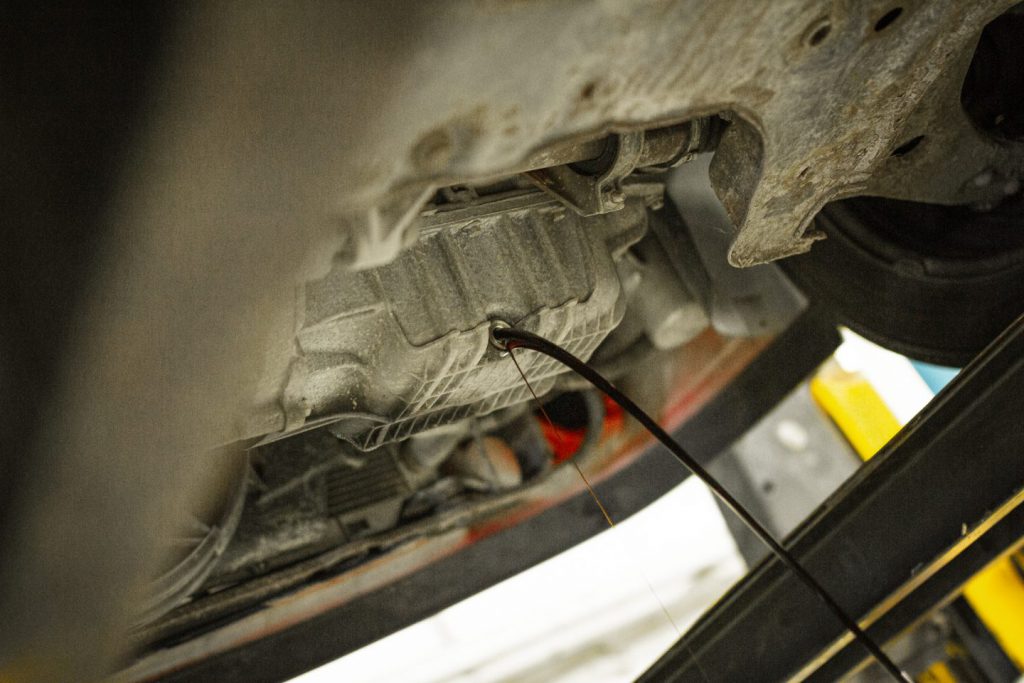
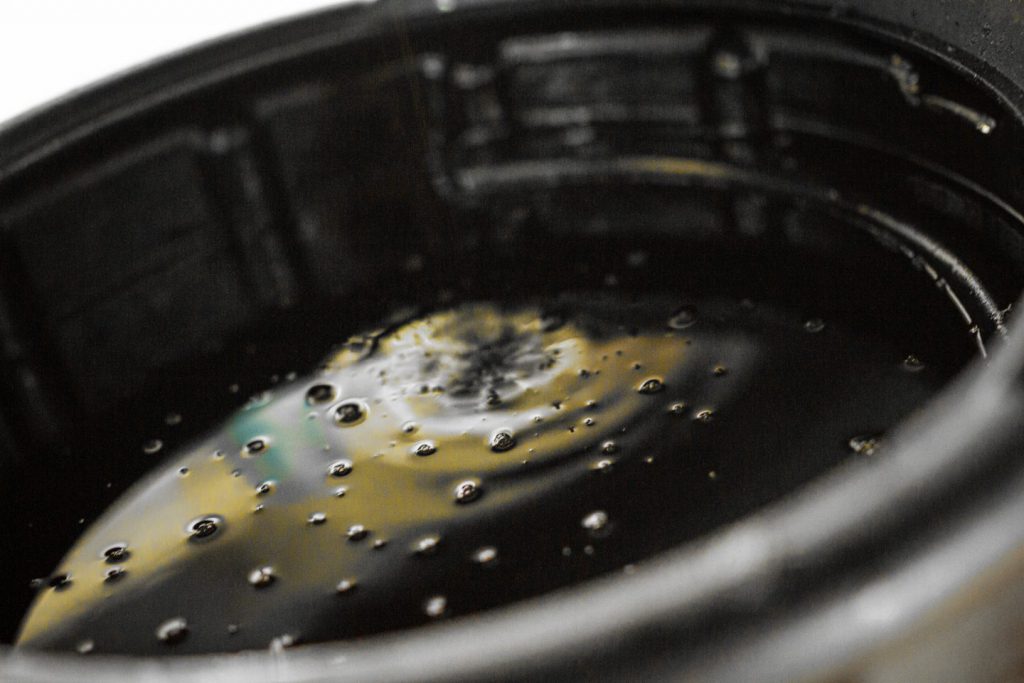
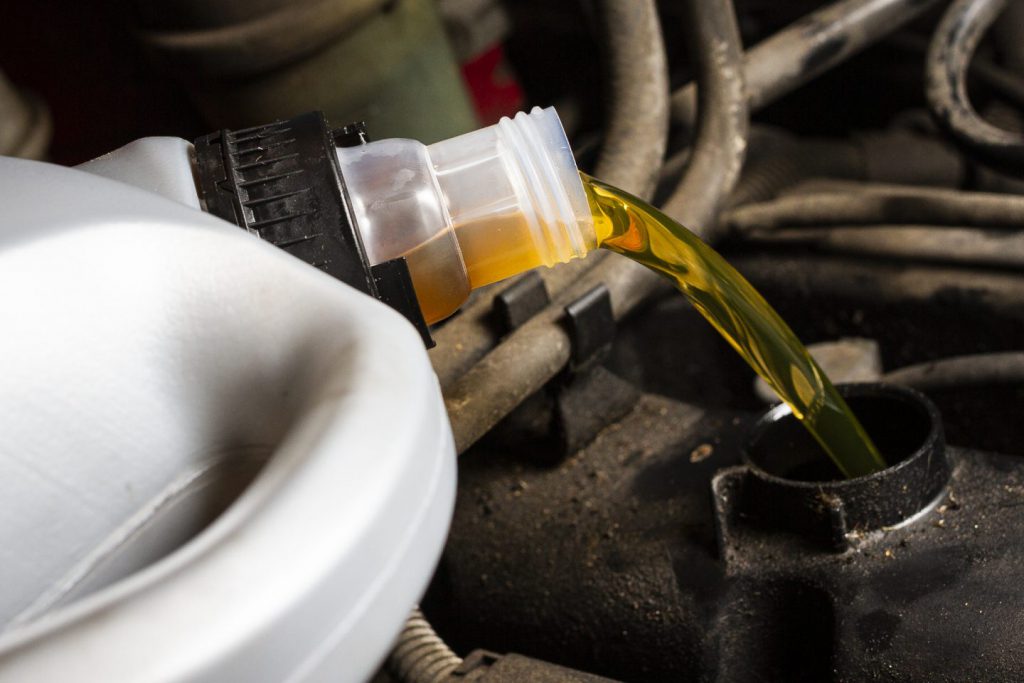
With the sump plug and oil filter replaced, it was time to fill up with some fresh oil and take the car out for a drive. On our test, our driver took the car for a run of about 26 miles to give the additives a chance of getting down to work on cleaning up the engine internals.
Once the car returned to the workshop, we repeated the emissions test to see what had changed. Even after a short period of time, there was a noticeable difference in the results.
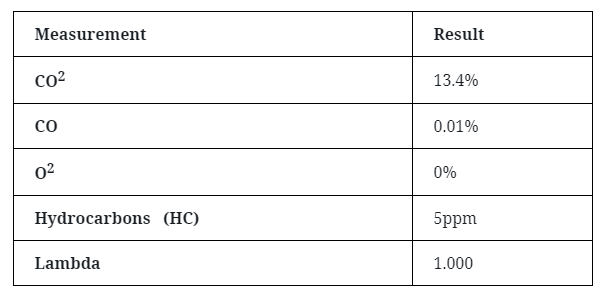
The most obvious difference was a decrease in the number of hydrocarbons from 18 to 5 PPM (Parts per Million). This means that, even after a single 26 mile journey, there was less unburnt fuel being emitted from the exhaust, leading to a more efficient burn and better fuel economy. The improved fuel burn efficiency is also evident from the increase of CO2.
As these results are taken after a relatively short journey, the results would most likely continue to improve as the remainder of the additives work their way through the system.
The other things that we can pick up from these results is that the Lambda reading went from being almost perfect, to absolutely perfect as 1.000 is the best result that you can get.
With the emissions test done, we then removed the spark plugs again to see if there was any reduction in the carbon build up that we saw on the initial inspection. This time the end of the spark plug had gone from a black carbon appearance to a healthier brown colour, signifying a more efficient fuel burn.

Like we did prior to the oil change and use of additives, we then took a look inside the cylinders to see what condition the pistons were in now. The first thing to notice was that the piston crowns were significantly cleaner, with some of the machining rings becoming visible. What was also clear to see was how much lighter the inside of the cylinders were.
This would be down to the removal of a large amount of the carbon build up, not only on the piston, but also the upper cylinder.

So, despite being a relatively clean engine to start off with, after only a 26 mile journey, the internals of the engine had already seen some significant cleaning and, with over a quarter of a tank of additive-mixed fuel still remaining, the cleaning process would be set to continue.
Even with the limited time of the demonstration, the benefits of using the range of additives from Millers Oils were clear to see. Not only do they work to improve the efficiency and performance of your engine, they help to keep those important engine internals running as they were intended to by the manufacturer.
So, if your car is not getting as many miles from a tank as you used to or maybe you just want to clean up your engine, make sure that you check out the range of additives from Millers Oils, you won’t be disappointed with the results.
Enjoyed this? Read more of our latest news:
- What is the FIA 8856-2018 Regulation
- How to Choose Racing Gloves & Boots
- How to Choose Racing Underwear
Where To Next?
Looking for the latest motorsport parts and accessories? Check out our wide range from top brands.
Come and visit us at our store, showroom and fitting centre in Wrexham.
Want to know more about our story? Learn about who we are and why we’ve been driven by passion for over 50 years.
Interested in everything we do? Catch up on all the latest Demon Tweeks news.
